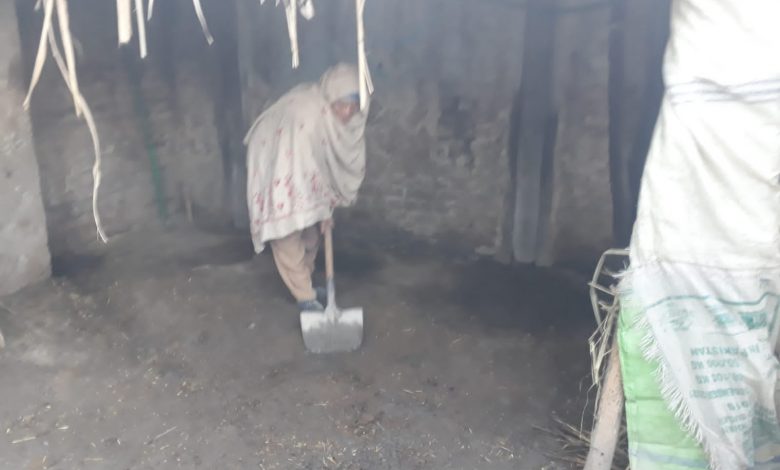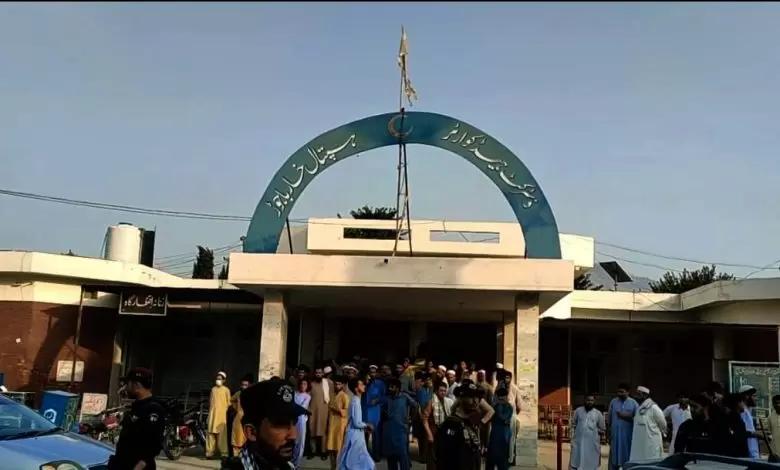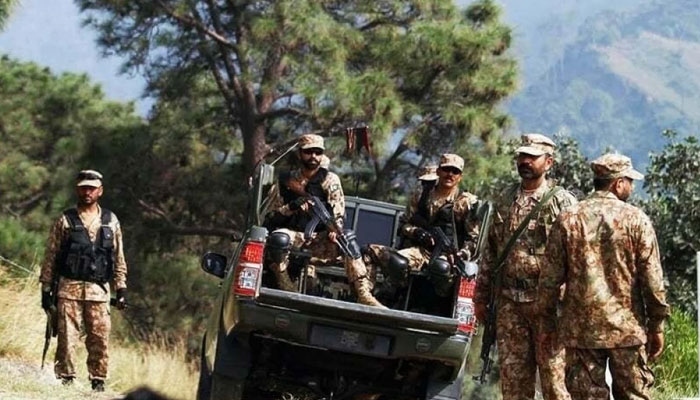
Tayyab Muhammadzai
Patasa Bibi, 60, a resident of Khayali Manzoori area of Charsadda district, is sweeping her buffalo shed. Patasa Bibi owned a buffalo which was her only source of income; however, she lost it to the August last year devastating floods.
She said that her life has come to a standstill after losing the animal. Patasa Bibi who lives in mud-brick house, said that now she was looking for help after losing her sole source of income. “My sons live separately from us and they are also jobless currently,” she said. She said that she was without any help and floods have just thrust her into a vortex of poverty. “Our losses were documented by the authorities but we received nothing in compensation,” she told TNN.
“My husband is sick and having vision issues and sitting at home and could not do any job,” she said. She said that she sews quilts and works in the neighborhood to eke out a living,” she said.
Patasa Bibi said that she buffalo used to produce about six liters of milk every day which she used to sold in the area and meet her expenses. “Floods deprived me of this sole source of income,” she said.
She said that authorities had promised to provide her goats but they have not received anything so far from authorities. “Now my boys are jobless and we are waiting to receive government promised goats and sheep,” she said.
Provincial Disaster Management Authority (PDMA), which is responsible for the dealing with disasters in the province, report said that thousands of cattle were lost to the floods across Khyber Pakhtunkhwa. Similarly, hundreds of animals were killed and injured in Charsadda district alone.
Dr Momin, director of livestock department in Charsadda said that floods have killed and maimed buffaloes, sheep, cow and poultry in the district. “We have dispatched teams to protect animals during floods in the district and about 100,000 animals were affected due to the floods,” he said.
Dr Momin said that damage assessment survey showed that 16 goats, 14 sheep, 76 cows and 4,300 poultry were swept away in floods,” he said. Similarly, the floods also affected nine private poultry farms and washed away over 35, 450 chickens.
Besides, he said that 100,000 other cattle were also affected due to the floods due to absence of fodder and water.
“We deputed eight teams across the district to vaccinate the livestock which visited all the union councils to vaccinate animals,” he said.
Besides, he said that there is diseases called ‘goutha’ which spreads after floods and kills animals in an instant,” Dr Momin said.
He said that at the same there was an outbreak of lumpy skin disease and their teams inoculated 3,500 cattle against the LSD.
“Government has provided us with forms to give to owners who have lost their livestock to document their losses and we are hopeful that government will provide some assistance to these owners,” Dr Momin said.
On the other hand, experts are of the view that killing of livestock in floods has led to shortage of meat and milk across the province and it will likely too have far-reaching impact on the employment in this sector.
Dr Zalakat Khan, an economics professor at the University of Peshawar, said that to address the shortage of animals, meat and milk, government should provide soft bank loans to the affected people so that they could meet their losses.
Besides, he said that these losses have also affected meat supply as Pakistanis were massive meat eaters and it has also resulted into milk shortage. “Estimates of damages show that there has been 35 to 40 percent decrease in meat and milk due to losses resulting from floods,” he said.
Dr Zalakat said that banking sector has a huge role to play in this regard and it should provide soft loans to affected people.
It is worth mentioning here that before the floods struck, large number of animals were affected from the lumpy skin diseases and hundreds of livestock owners suffered due to death of their animals.
2.jpeg)
1.jpeg)
09 Jul, 2025





1.jpeg)
09 Jul, 2025